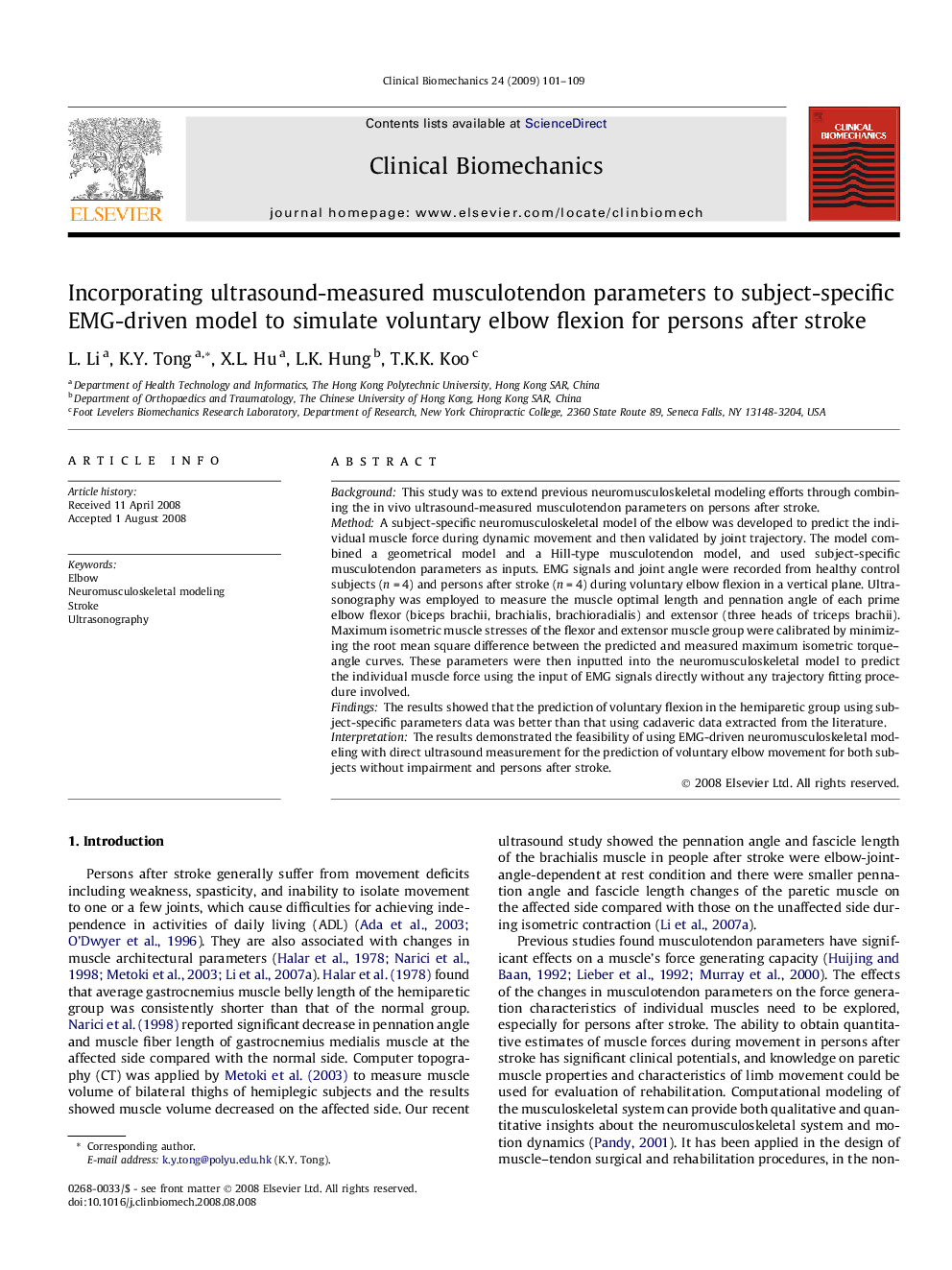| Article ID | Journal | Published Year | Pages | File Type |
|---|---|---|---|---|
| 4050852 | Clinical Biomechanics | 2009 | 9 Pages |
BackgroundThis study was to extend previous neuromusculoskeletal modeling efforts through combining the in vivo ultrasound-measured musculotendon parameters on persons after stroke.MethodA subject-specific neuromusculoskeletal model of the elbow was developed to predict the individual muscle force during dynamic movement and then validated by joint trajectory. The model combined a geometrical model and a Hill-type musculotendon model, and used subject-specific musculotendon parameters as inputs. EMG signals and joint angle were recorded from healthy control subjects (n = 4) and persons after stroke (n = 4) during voluntary elbow flexion in a vertical plane. Ultrasonography was employed to measure the muscle optimal length and pennation angle of each prime elbow flexor (biceps brachii, brachialis, brachioradialis) and extensor (three heads of triceps brachii). Maximum isometric muscle stresses of the flexor and extensor muscle group were calibrated by minimizing the root mean square difference between the predicted and measured maximum isometric torque–angle curves. These parameters were then inputted into the neuromusculoskeletal model to predict the individual muscle force using the input of EMG signals directly without any trajectory fitting procedure involved.FindingsThe results showed that the prediction of voluntary flexion in the hemiparetic group using subject-specific parameters data was better than that using cadaveric data extracted from the literature.InterpretationThe results demonstrated the feasibility of using EMG-driven neuromusculoskeletal modeling with direct ultrasound measurement for the prediction of voluntary elbow movement for both subjects without impairment and persons after stroke.
